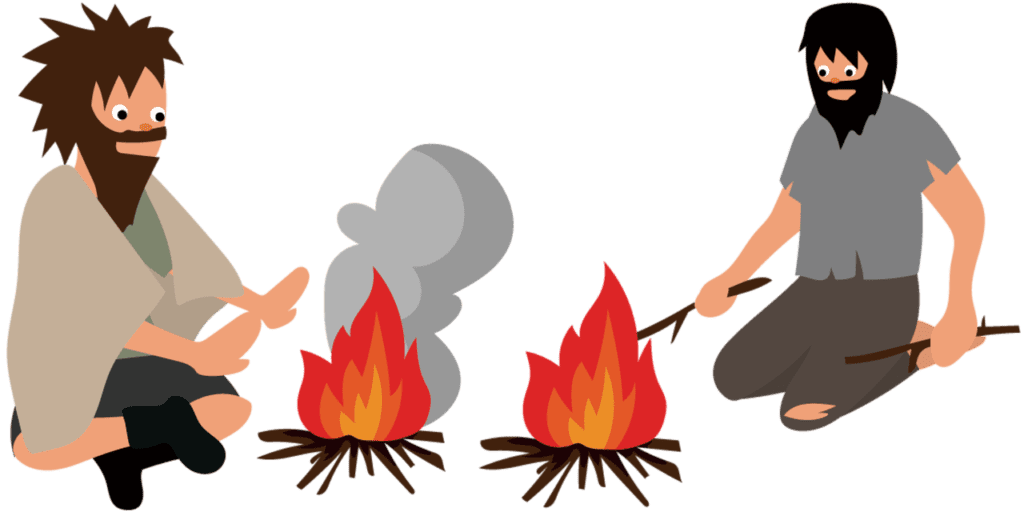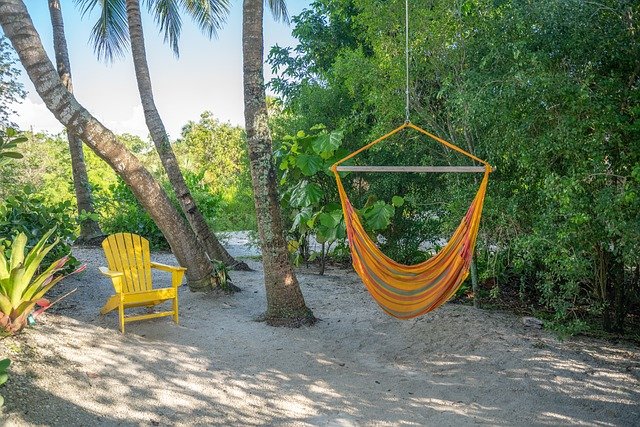Table of Contents
Surviving in the wilderness can be a thrilling yet challenging experience. Whether you’re an outdoor enthusiast, a nature lover, or simply find yourself unexpectedly in the forest, having the right skills and mindset is crucial for your safety and well-being. In this article, we’ll explore essential survival tips in the forest for navigating and thriving in forest environments.

◈ Understanding the Environment
1. Types of Forests
Forests vary widely depending on location and climate. They can be coniferous, deciduous, tropical, or temperate. Each type presents unique challenges and resources for survival. Coniferous forests, with their evergreen trees, offer materials like pine needles for insulation but can be colder due to higher altitudes. Deciduous forests, shedding leaves seasonally, provide rich ground cover for bedding but require caution with wet conditions. Tropical forests boast abundant plant and animal life but also harbor dangers like venomous creatures. Temperate forests offer a mix of both, with moderate climates and diverse resources.
2. Wildlife and Flora
Familiarize yourself with the local wildlife and plants. Some may be sources of food or medicine, while others could pose dangers. Understanding the ecosystem is key to making informed decisions. For instance, knowing which berries are edible or which plants can treat ailments can be lifesaving. Conversely, recognizing poisonous plants and dangerous animals is essential for avoiding harm. The more you know about your surroundings, the better your chances of finding food and staying safe. These survival tips in the forest can be the difference between a safe journey and a perilous one.
◈ Essential Survival Tips in the Forest

1. Building Shelter
Constructing a shelter is a priority. Use natural materials like branches, leaves, and debris to create a sturdy shelter that protects you from the elements. A well-built shelter provides warmth, safety from wildlife, and protection from weather conditions. Start by finding a dry, flat area, preferably near water but not too close to avoid flooding. Use branches to form a frame and cover it with leaves and moss for insulation. In colder climates, create a smaller space to retain body heat.

2. Finding Water
Locate a freshwater source such as rivers, streams, or rainwater. If unsure about its safety, purify water before drinking by boiling or using a portable filter. Water is essential for survival, and finding a reliable source should be one of your first tasks. Remember, clear running water is generally safer than stagnant water. Collect rainwater with makeshift containers if no natural sources are available. Always prioritize water safety to avoid illnesses from contaminants.
3. Starting a Fire
Fire provides warmth, and light, and can be used for cooking. Carry fire-starting tools like waterproof matches or a fire starter kit. Gather dry tinder and kindling to ignite a fire. Fire is crucial for both comfort and survival. It can help you cook food, boil water for purification, and signal for help. Ensure you have a safe spot for your fire, away from flammable materials, and always keep an eye on it to prevent wildfires. Practice fire-starting techniques before you need them to ensure you can build a fire under any conditions. Among the survival tips in the forest, fire-starting is one of the most vital.

4. Identifying Edible Plants
Learn to recognize edible plants in the area. Be cautious and positively identify plants before consuming, as some can be toxic. A field guide to edible plants can be invaluable. Familiarize yourself with common edible species like dandelions, wild garlic, and berries. Avoid plants with milky sap, thorns, or an almond scent, as these are often indicators of toxicity. Test unknown plants by the Universal Edibility Test, but remember, in a real survival situation, only consume what you are sure is safe.
5. Basic First Aid
Carry a basic first aid kit and know how to address common injuries like cuts, burns, or sprains. Prioritize cleanliness and infection prevention. A well-stocked kit includes bandages, antiseptics, pain relievers, and tools like tweezers. Knowing how to use these items is just as important as having them. Learn basic first aid skills such as wound cleaning, splinting broken bones, and treating burns. In the wilderness, medical help is often far away, so your knowledge and preparedness can make a significant difference.
◈ Tools and Equipment
1. Knife and Multi-tool
A sturdy knife is indispensable for cutting wood, preparing food, and other tasks. A multi-tool with various functions can also be useful. These tools are your survival companions, aiding in everything from building shelters to preparing food. Choose a knife with a fixed blade for strength and durability. A multi-tool should include essentials like pliers, scissors, and a can opener. Keep your tools sharp and well-maintained to ensure they function properly when needed.
2. Cordage
Pack strong, lightweight cordage for shelter-building, securing gear, or crafting tools. Paracord is an excellent choice due to its strength and versatility. Use it to tie branches together for a shelter, create snares for catching food, or hang food out of reach of animals. Learning various knots, such as the bowline and clove hitch, can enhance the effectiveness of your cordage.

3. Water Filtration
Invest in a reliable water filtration system or purification tablets to ensure safe drinking water. Clean water is critical, and having a portable filtration system can save you from dehydration and illness. Filters can remove bacteria and protozoa, while tablets can kill viruses. Always carry a backup method, like boiling, in case your primary system fails. Among the survival tips in the forest, ensuring water safety is paramount.
◈ Navigating and Signaling
1. Using Natural Indicators
Learn to navigate using natural cues like the sun’s position, moss growth patterns, or prevailing winds. Natural navigation skills can prevent you from getting lost and help you find your way to safety. The sun rises in the east and sets in the west, moss often grows on the north side of trees, and prevailing winds can indicate directions in certain regions. These skills are especially useful if you lose your map or compass.

2. Creating Signaling Devices
In case of emergency, use signaling devices like mirrors, whistles, or brightly colored clothing to attract attention. Effective signaling can mean the difference between rescue and prolonged survival. Reflective surfaces can catch the attention of aircraft or distant rescuers, while whistles can be heard over long distances. Bright clothing or materials can be laid out in clearings to create visible signals.
◈ Safety and Self-Protection

1. Dealing with Wildlife
Respect wildlife from a distance. Be aware of potential threats such as venomous snakes or aggressive mammals. Store food properly to avoid attracting animals. Understanding animal behavior can help you avoid dangerous encounters. Keep food and waste secured in containers or hung from trees. If you encounter a large animal, stay calm and back away slowly. Knowing how to respond to different animals can keep you safe. These survival tips in the forest are crucial for maintaining safety.
2. Avoiding Hazards
Stay clear of hazardous terrain like cliffs or unstable slopes. Be cautious around bodies of water and during severe weather conditions. Awareness of your environment can prevent accidents. Avoid walking near the edges of cliffs, and be mindful of loose rocks. During storms, seek shelter away from tall trees and water bodies that might flood. Understanding natural hazards helps you make safer decisions.
◈ Mental Preparedness
1. Staying Calm
Remain calm and focused during survival situations. Panic can impair judgment and decision-making. A clear mind allows you to think critically and make better choices. Practice deep breathing and stay positive, even when faced with challenges. Keeping a calm demeanor can help you assess situations more accurately and react appropriately.
2. Building Resilience
Survival is as much about mental fortitude as it is about physical skills. Stay positive, resourceful, and adaptable. Mental resilience helps you push through tough situations and find solutions. Practice self-motivation and remind yourself of your goals and reasons for persevering. Adaptability means being willing to change plans and use available resources creatively. Among the survival tips in the forest, mental preparedness cannot be overstated.
National Geographic’s Guide to Wilderness Survival teaches essential skills for thriving in the wild.
Conclusion
Surviving in the forest requires a combination of practical skills, preparedness, and a resilient mindset. By understanding your environment, acquiring essential survival skills, and equipping yourself with the right tools, you can navigate and thrive in the wilderness. Embrace the challenge, respect nature, and stay prepared for any situation the wild may present. Remember, these survival tips in the forest are your guide to thriving in any wilderness scenario.

How can I tell if a plant is edible?
Look for recognizable features using a reliable field guide. If unsure, avoid consumption.
What should I do if I encounter a wild animal?
Remain calm, back away slowly, and avoid eye contact. Do not run or provoke the animal.
Is it safe to drink water from streams or rivers?
Water from natural sources may contain contaminants. Boil water or use filtration methods before drinking.
What should be in a basic survival kit?
A survival kit should include essentials like a knife, first aid supplies, water purification tools, and signaling devices.
How do I stay oriented in the forest without a compass?
Use natural navigation techniques such as observing the sun, stars, or landscape features.



